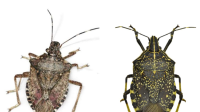Seen something unusual? MAKE A REPORT
Seen something unusual? MAKE A REPORT
How did you go? Are you a quiz master? See the answers to the biosecurity quiz below.

KVH investigates reports of unusual symptoms to identify and manage any biosecurity risks.